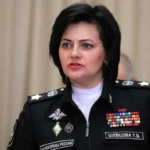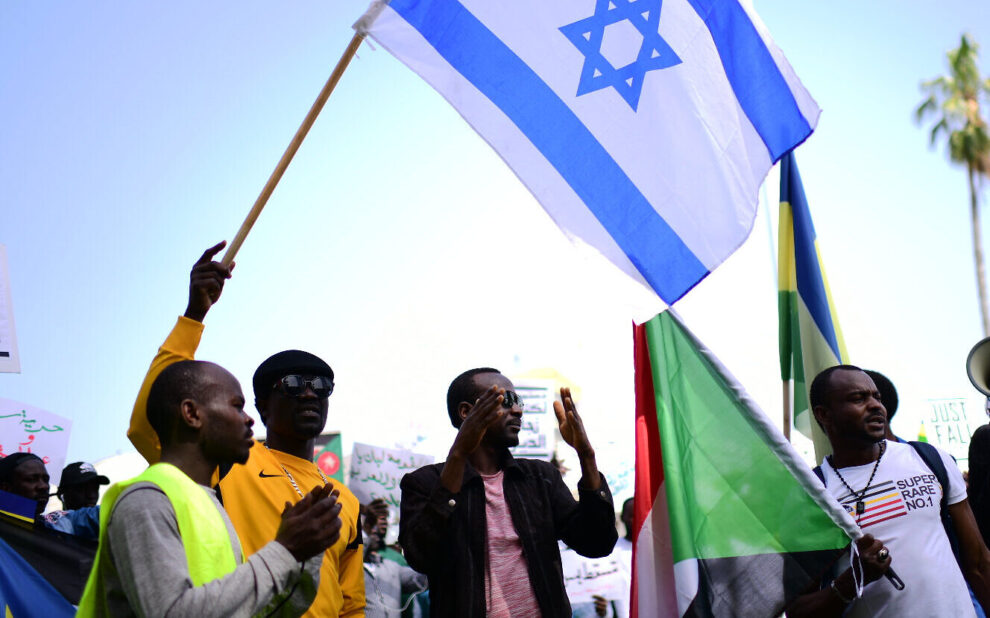Usumain Baraka still remembers when Janjaweed, Arab militiamen on horseback, killed his father and big brother, in his native Darfur, Sudan. Baraka, who moved to Israel five years later at the age of 14, in 2008, says people from his tribe, the Masalit, are still being murdered daily in the area of the West Darfur capital of El Geneina,
“Over the last year, I’ve lost nephews and cousins, close childhood friends and neighbors,” he told The Times of Israel.
On October 7, memories from Darfur came flooding back.
Friends of his were among the more than 260 young people gunned down as they ran from an all-night party. He knows soldiers who have fallen during the current war.
“During my first few years in Israel, I was in a deep trauma and received treatment,” said Baraka, who lives in the central city of Raanana.
“Today, I have a toolbox that helps me to cope with these things. I’m trying to help families (of friends who were murdered or are missing). It’s painful.”

He added, “I always thought that I was safe in Israel. I never expected that what I saw at the age of nine would happen here. But I was wrong.”
“I’m here 15 years, and once a year, everyone comes together (on Holocaust Memorial Day) and says ‘Never Again.’”
“But these kinds of things are happening today, all over the world, in different countries. It’s human nature, it seems.”

Brhane Negasi was one of a few thousand African refugees now living in Israel to spend time in a camp run by Islamist terrorists several years before ISIS in the Sinai desert came to light.
“I saw horrors there,” said the former captain in the Eritrean army, who managed to enter Israel 15 years ago.
“I saw ISIS raping and burning and murdering people. But I never saw them touching the children.”
“Hamas isn’t ISIS — it’s even worse than ISIS,” he said.
“I am praying for the People of Israel.”
On October 7, terrorists from Gaza burst through the border fence in a shock assault and killed some 1,400 people, the vast majority of them civilians, including children and babies, many of them tied, burned, and beheaded.
Israel is currently home to some 25,000 asylum seekers from Africa, among them around 18,000 from Eritrea, and more than 3,000 from Sudan, including Darfur.
Three Eritreans from the southern city of Sderot are thought to be in Hamas captivity, according to Negasi. Hamas rockets fell on two Eritrean refugee homes in Ashkelon and one in Ashdod, causing damage but no injuries. The community has evacuated dozens of its members from the south since October 7 and continues to care for one family in Sderot that does not want to move.
One refugee from Darfur was murdered in Sderot during the Hamas invasion, according to Baraka’s information, and the community is still trying to establish how many are missing, dead, or in Hamas’s hands.
But beyond helping their own communities, experiencing economic hardship, and no little racist abuse — especially from some of the working-class Israelis who share their neighborhoods with many African refugees — asylum seekers countrywide have joined the effort to help Israeli soldiers and Israeli families evacuated from dangerous areas in the country’s south and north.
Among their many activities, Eritrean asylum seekers serve 300 portions of food each day to volunteers at a massive civilian relief center in Tel Aviv.
The community’s women cook the food at home and some come to serve it. And every day, around 150 to 170 Eritrean men come from different areas of the country to help pack and unpack boxes, and sort donated equipment.

Darfuris are also helping, said Baraka, packing everything from food to medical supplies.
Even the tiny community of refugees from the Democratic Republic of Congo, many of whom have been in Israel for 30 years, is doing what it can.
Its 700 or so members, who live mainly in the central cities of Tel Aviv, Holon, and Bat Yam, raised NIS 6,500 ($1,600) last week to buy supplies, which they took to the Bat Yam Municipality for distribution.
One member of the community suffered damage to his home in central Petah Tikva on October 14 when a Hamas rocket hit. He wasn’t hurt.
Activist Nely Mulenga Mwamba, in Israel for 21 years, said Congolese in Israel, many of whom work as cleaners, himself included, currently had little work and were living off their savings.
While speaking to this reporter, he was reminded by his landlord that he owed the building’s housing committee NIS 540 ($135) in arrears.
Between 2006 and 2013, when Israel finished building a wall along the Egyptian border, refugees from countries such as Eritrea and Sudan entered the country to escape wars, brutal dictatorships, and other hardships.
For most of their time in the country, Israel has had governments dominated by anti-migrant politicians.
Berhane Negasi is the only one to have been given Israeli citizenship.
One Sudanese and 32 Eritreans have received refugee status under the Refugee Convention, according to the Interior Ministry’s Population and Immigration Authority.
And some 4,700 asylum seekers — Baraka is among them — have temporary residence, which comes with an identity card that enables them to function in most walks of life. Most received it after a Supreme Court ruling in 2021.
“This is our home,” said Negasi, who runs an organization called Tikva Hadasha (New Hope). “We don’t have another country. Our country is bleeding, and we are standing with it.
“Everyone has forgotten about their own problems. I have never seen solidarity like this.”
Source : Times of Israel











